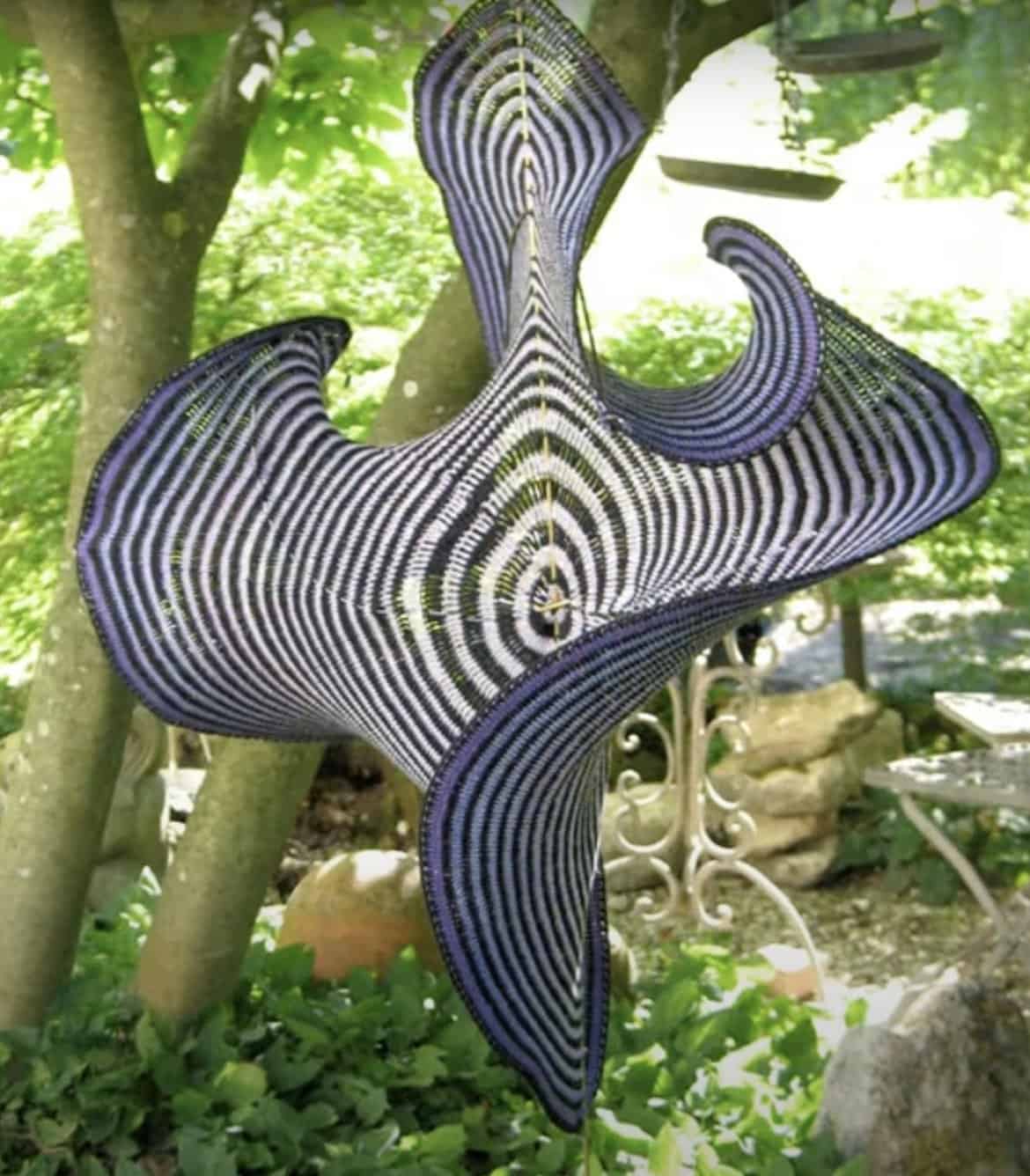Crochet is a craft that has been used in very interesting ways in the world of deep mathematics. Several artists have taken that inspiration and those mathematical concepts and used math-based crochet in their art.
This creative process is something that I love to see because it blends several areas of study into one beautiful product.
Here are ten different examples that give a lovely introduction to how math and crochet have come together in artwork.
Mathematical Bead Crochet
Math professor Susan Goldstine has collaborated with computer scientist and artist Ellie Baker on applications of advanced mathematics to bead crochet work.
On the Mathematical Art Galleries website, she explains the math behind these beaded crochet bracelets this project saying: “Successful bead crochet bracelet patterns are best considered as infinite plane tilings, with the tiles composed of contiguous beads that obey certain placement rules dictated by the circumference of the beaded rope and the structure of the crochet.”
If, like me, you’re not a math professor and that went over your head, you’ll be glad to hear that this bead crochet artwork also looks really cool, and you don’t have to understand the math to create one yourself! Just check out the video below.
Fractal Crochet Blanket
A fractal is an infinitely repeating geometric pattern that typically looks the same at any scale (no matter how “zoomed in” or “zoomed out” you are, the pattern looks the same.)
This blanket square is based on Hilbert’s curve, a continuous fractal space-filling curve.
You can read a whole post about fractals within crochet here.
Dihedral Granny Pillow
The math in a crochet project is rarely obvious to the eye.
Mathematical grad student Andrea Heald explained: “This throw pillow is made of granny crochet hexagons. The pattern was determined by associating each color with an element of the dihedral group of order 6 and letting it “act” on the multicolored hexagons.”
Crochet Cumulus Clouds

Architectural artist Ciro Najle used mathematical fractals to create these crochet clouds. This work of art was inspired by a project that used nets to capture moisture from the air to improve water access in arid regions.
A fractal structure appears in clouds in nature, and this crochet piece is designed to imitate that structure.
Crochet Hexaflexagon/ Hexaflexacube
A flexagon is a flat model, usually made by folding a strip of paper, that can be folded or flexed to show more faces that the ones that were originally apparent. At first glance, this cushion seems to only have 2 faces, but it actually has six.
In this case, the flexagon has six sides (a hexagon). Thus, hexaflexagon! Since this shape also has six faces, it could also be called a hexahexaflexagon.
You can crochet or knit one of these yourself using the pattern for sale by Wooly Thoughts.
The video below shows the artist folding the cushion to show the six faces. Take a look, the visual really helps to understand what is meant by having more faces than what you can see at first glance.
Dual Seven-Colored Tori
Let’s break this one down – first, you need to know that a donut-shaped object is called a torus.
There is a mathematical theorem, the Four-Color Theorem, that states that any map drawn in the Euclidian plane (that’s the one you studied in high school geometry) can be colored with four colors in such a way that no two adjacent countries are the same color.
To do the same thing with a torus (rather than a plane), you need seven colors.
Mathematics professor Carolyn Yackel represented this through the crocheted torus here, which is shown pre-stuffing.

Crochet Lorenz Manifold
The famous Lorenz system describes the path of points in three-dimensional space over time and is widely accepted as a model for chaos in the atmosphere.

Two mathematicians, Dr. Hinke Osinga and Professor Bernd Krauskopf, have turned these famous Lorenz equations into a beautiful real-life object by crocheting computer-generated instructions.
Together all the stitches create a complicated surface called the Lorenz manifold.
Fibonacci Crochet
You’ve probably heard of the Fibonacci sequence – it’s a bit easier to understand than some of the other math we’ve looked at here. This famous sequence of numbers is made by adding the previous two numbers together. 1, 1, 2, 3, 5, 8… and on it goes.
Many artists use the Fibonacci sequence to create art that is pleasing to the eye. A Fibonacci scarf (or other piece) is made by using two Fibonacci sequences moving in opposite directions to create stripes.
The shawl above uses the Fibonacci sequence to determine how many rows of each color will make up the stripes.
Hyperbolic Crochet Reef Project
There is no way that I could write this article without including the hyperbolic crochet reef project and the various spin-off projects that have come out of that.
It was a mathematician who realized that crochet can be used to express hyperbolic geometry principles that weren’t easily understandable.
Sisters Christine and Margaret Wertheim, one of whom is an artist and the other a scientist, used these principles to develop the eco-awareness coral reef project, which has grown and grown and been showcased around the world.
There are many other mathematical artists who incorporate hyperbolic crochet into their work, not just those who crochet reef-related items. In fact, hyperbolic crochet is probably the most popular type of math-based crochet.
Variations on Hyperbolic Crochet
Other artists have taken the basic idea of hyperbolic crochet and expanded on it. The above creator even used some hyperbolic crochet as part of a shawl!
It’s really very beautiful, just like so many similar shapes in nature.

